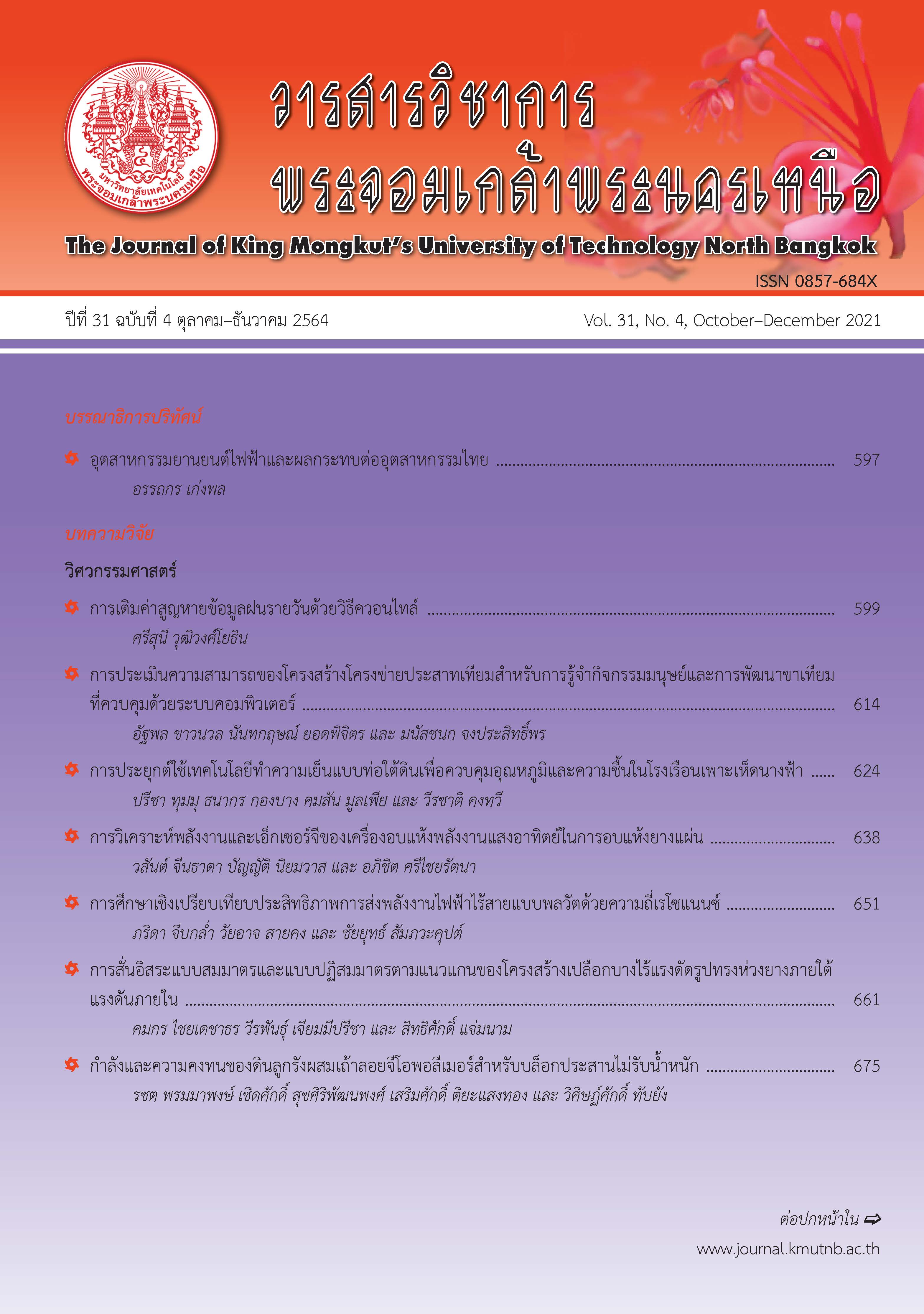การประยุกต์ใช้กระบวนการตัดสินใจลำดับชั้นและการวิจัยอนาคตเพื่อการพัฒนาเกณฑ์มาตรฐานการเป็นมหาวิทยาลัยเชิงประกอบการ
Main Article Content
บทคัดย่อ
งานวิจัยนี้มีวัตถุประสงค์เพื่อพัฒนาเกณฑ์ประเมินมาตรฐานการเป็นมหาวิทยาลัยเชิงประกอบการในประเทศไทย งานวิจัยโดยใช้เทคนิคการวิจัยอนาคตแบบเดลฟายประยุกต์ (EDFR) จากผู้เชี่ยวชาญที่ให้ข้อมูลหลัก จำนวน 17 คน และการประยุกต์เทคนิคกระบวนการตัดสินใจแบบวิเคราะห์ลำดับชั้น (Analysis Hierarchy Process: AHP) เพื่อสรุปองค์ประกอบเกณฑ์ประเมินมาตรฐานการเป็นมหาวิทยาลัยเชิงประกอบการ ผลการศึกษาพบว่า มหาวิทยาลัยเชิงประกอบการในบริบทประเทศไทยนั้นเป็นมหาวิทยาลัยที่สร้างความเปลี่ยนแปลงให้สังคมจากการเพิ่มมูลค่าตามทบริบทของมหาวิทยาลัย มีกระบวนการพื้นฐานทางความคิดแบบผู้ประกอบการเป็นหลักสำคัญของมหาวิทยาลัย โดยยังคงไว้ซึ่ง พันธกิจหลักของสถาบันอุดมศึกษาในการผลิตบัณฑิต การวิจัย การบริการวิชาการและการทำนุบำรุงศิลปวัฒนธรรม แต่มีการมุ่งเน้นในการผลิตบัณฑิตที่มีแนวคิดความเป็นผู้ประกอบการ วิจัยและสร้างความรู้ใหม่ รวมถึงนวัตกรรมและงานสร้างสรรค์ สนับสนุนการแลกเปลี่ยนความรู้กับหน่วยงานภายนอก การพัฒนาเกณฑ์ประเมินมาตรฐานการเป็นมหาวิทยาลัยเชิงประกอบการ พบว่า ได้พัฒนาเกณฑ์ที่เรียกว่า PEACH ประกอบด้วย 5 ด้าน 26 องค์ประกอบย่อย ได้แก่ 1) ด้านนโยบายและการนำองค์กร (P) 2) ด้านผลลัพธ์เชิงประกอบการ (E) 3) ด้านความคล่องตัวในการปฏิบัติงาน (A) 4) ด้านความสามารถบุคลากรและองค์การ (C) และ 5) ด้านกิจกรรมการศึกษาแบบองค์รวมเชิงประกอบการ (H) จากการพิจารณาโดยผู้เชี่ยวชาญโดยใช้เทคนิคการวิจัยอนาคตแบบเดลฟายประยุกต์ (EDFR) ค่ามัธยฐาน (Median) ในแต่ละด้านอยู่ระหว่าง 3.98 – 5 และพิสัยระหว่างควอไทล์ (Interquartile Range) อยู่ระหว่าง 0.78 - 1 พบว่า เกณฑ์ที่พัฒนาขึ้นมีความเหมาะสม และการประยุกต์เทคนิคกระบวนการตัดสินใจแบบวิเคราะห์ลำดับชั้นมีผลการวิเคราะห์อัตราส่วนความสอดคล้องของทุกด้านที่ได้มีค่าเท่ากับ 0.027 – 0.096 โดยมีค่าน้อยกว่า 0.10 อยู่ในเกณฑ์ที่ยอมรับได้
Article Details
บทความที่ลงตีพิมพ์เป็นข้อคิดเห็นของผู้เขียนเท่านั้น
ผู้เขียนจะต้องเป็นผู้รับผิดชอบต่อผลทางกฎหมายใดๆ ที่อาจเกิดขึ้นจากบทความนั้น
เอกสารอ้างอิง
[2] H. Etzkowitz, A. Webster, C. Gebhardt, and B. Terra, “The future of the university and the university of the future: Evolution of ivory tower to entrepreneurial paradigm,” Research Policy, vol. 29, no. 2, pp. 313–330, 2000.
[3] T. Cook, TR. Dwek, B. Blumberg, and T. Hockaday, “Commercializing university research: Threats and opportunities –The Oxford model,” Capitalism and Society, vol. 3, no. 1, 2008.
[4] M. Guerrero and D. Urbano, “The development of an entrepreneurial university,” Journal of Technology Transfer, vol. 39, no. 1, pp. 43–74, 2010.
[5] A. Kirby, D. Urbano, and M. Guerrero, “Making universities more entrepreneurial: Development of a model,”Canadian Journal of Administrative Sciences, vol. 28, no. 3, pp. 302–316, 2011.
[6] H. Etzkowitz, “Research groups as ‘quasi-firms’: the invention of the entrepreneurial university,” Research Policy, vol. 32, no. 1, pp. 109–121, 2003.
[7] H. Etzkowitz, “The evolution of the entrepreneurial university,” International Journal of Technology and Globalisation, vol. 1, no. 1, pp. 64–77, 2004.
[8] H. Etzkowitz and C. Zhou, “Regional innovation initiator: The entrepreneurial university in various triple helix models,” in Proceedings Singapore Triple Helix VI Conference Theme Paper, 2007, pp. 1–25.
[9] Organisation for Economic Co-operation and Development.(2012, December). A Guiding Framework for Entrepreneurial Universities. [Online]. Available: https://www.oecd.org/site/cfecpr/EC-OECD%20Entrepreneurial%20Universities%20Framework.pdf
[10] A. Gibb, G. Haskins, and I. Roberson, “Leading the entrepreneurial university: Meeting the entrepreneurial development needs of higher education institutions,” in the National Council for Graduate Entrepreneurship. National Centre for Entrepreneurship in Education (NCEE), 2012, pp. 3–28.
[11] S. Cheevapruk, C. Kittisaknawin, and N. Deesawadi, “Direction toward entrepreneurial university by organization development,” Journal of Modern Management, vol. 16, no. 1, pp. 219–227, 2018 (in Thai).
[12] A. Chatmarathong, “Strategies and mission model for developing research university toward entrepreneurial university,” Ph.D. dissertation, Department of Education Policy Management and Leadership, Faculty of Education, Chulalongkorn University. Bangkok, Thailand, 2017 (in Thai).
[13] T. Dharmavija, “Entrepreneurial university in Thailand : A case study of King Mongkuts University of Technology Thonburi (KMUTT),” M.S. thesis, Faculty of Management, University of Tampere, Finland, 2017.
[14] W. Chareonput and P. Chirinang, “Future research techniques; Delphi technique,” Western University Research Journal of Humanities and Social Science, vol. 1, no. 3, pp. 26–40, 2015 (in Thai).
[15] V. Tunsirimongkol, AHP: The Most Popular Decision Process in the World. Bangkok: Graphic and Printing Center, 2013 (in Thai).
[16] C. Poompipatpong and A. Kengpol, “Weighting of diesel engine’s parameters by using group decision making,” The Journal of Industrial Technology, vol. 10 no. 3, pp. 1–15, 2014 (in Thai).
[17] V. Podvezko, “Application of AHP technique,” Journal of Business Economics and Management, vol. 10, no. 2, pp. 181–189, 2009.
[18] T. L. Satty and L.G. Vargas, Models, Methods, Concepts and Applications of the Analytic Hierarchy Process. Springer, 2012.
[19] T. Aguason and M. Jimenez, “The geometric consistency index; Approximated threshold,” European Journal of Operation Research, vol. 147, pp. 137 – 145, 2003.
[20] Royal Thai Government Gazette, “Higher education institution standard 2011,” vol. 128, Special issue 47, April 2011.
[21] T. T. Macmillan, “The Delphi technique,” presented at the Annual Meeting of the California Junior Colleges Associations Committee on Research and Development, Monterey, California, May 3–5, 1971.
[22] J. Chumkate, “Development on evaluation criteria of creative management in community business in western Thailand,” Ph. D. dissertation, Faculty of Management Science, Silpakorn University, 2015 (in Thai).
[23] H. B. Dinitzen and L. K. Jensen, Organization Theory – A Practical Approach. Denmark: Hans Reitzels Forlag publisher, 2010.
[24] N. Kriwong and R. Leenum, “Job satisfaction of nurses in Songklanagarind hospital,” Princess of Naradhiwas University Journal, vol. 12, no. 2, pp. 51–66 (in Thai).
[25] P. D. Mauch, Quality Management: Theory and Apprication. CRC Press. Taylor & Francis Group, 2010.
[26] D.A Kirby, “Creating entrepreneurial universities: A consideration, school of management,” Working Paper, University of Surrey, 2002.
[27] J. Ropke, “The entrepreneurial university: Innovation, academic knowledge creation and regional development in a globalized economy,” Working paper, Philipps Universitat Marburg, Germany, 1998.
[28] S. Sanglimsuwan, “Development of the assessment criteria for small and medium-sized enterprises management” Ph. D. dissertation, College of Research Methodology and Cognitive Science, Burapha University, 2016 (in Thai).
[29] H. Etzkowitz, “The entrepreneurial university: Vision and metrics,” Industry and Higher Education, vol. 30, no. 2, pp. 83–97, 2016.

